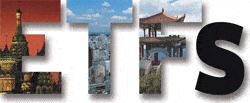EXCHANGE-TRADED FUNDS
Emerging market ETFs are coming into their own as an investment tool. The reason? They provide increased opportunities for both the investor and the underlying market.

|
As emerging market equities become an increasingly important part of the portfolio allocation of all investorsfrom the largest institutional to the smallest individualexchange-traded funds are increasingly being used to provide easy access to those markets. And as interest in emerging market ETFs continues to explode, those countries that are included see greater investment assets being devoted and greater overall investor enthusiasm. Unfortunately, the benefits of the product from an investors perspectivevisibility, liquidity and ease of usecan have both positive and negative results for the underlying markets.
Kevin Rich, chief executive officer of DB Commodity Services, explains that an ETF is really a wrapper to gain exposure to an asset class that one may not ordinarily have easy access to: The advantage of investing in an ETF versus an open-end mutual fund is clearly that the investor gets more liquidity and more transparency. Plus, ETFs usually carry lower fees than there would be for investing in alternative structures, particularly in the case of the emerging markets.
Jennifer Grancio, head of distribution at iShares Europe, says that from a portfolio allocation perspective people should have some allocation in the emerging markets. This has gone beyond simply the mega-institutional clients, and now mid-market and high-net-worth individuals are realizing this, and the emerging markets are the part of a portfolio where ETFs really make sense. They are simpler to use, and you do not have the individual share risk, she explains. Essentially, they provide international access to a market and an easy way to invest. As a foreign investor, it is quite time consuming to get in and out of market, she says. To invest directly, there are often a lot of hoops to be jumped through in terms of applying for licenses, going through the settlement procedures and all the other steps that really put people off.
Many investors, even larger ones, dont have the resources necessary not only to enter such a market but to understand how the market works and what makes a good investment opportunity. One market participant explains: With no complicated approval process, an ETF is a simple and convenient way to get exposure. Indeed, it is estimated that more than 50% of ETF investment funds in the United States come from individual investorsoften channeled through their investment managers but also increasingly through more direct investment. In Europe the individual investor piece of the ETF pie is also on the increase.
Strong in a Bear Market
While the emerging markets were slowing down recently, far from losing power, emerging market ETFs offered a great alternate investment opportunity, according to Cora ODonohoe, head of index portfolio management at iShares: In the recent downturn, you might have expected significant outflows from the product, but we have not seen that. We have seen strong inflows into the emerging market funds.
In fact, as markets turned down, we did not see investors looking to get out of the market altogether but, rather, changing where funds were allocated, ODonohoe adds. ETFs work well because people can get in and out easily and change products as the market changes. In addition, while there are single-country ETFs for those investors with a particular view on a market, many provide multi-country exposure, tracking indexes covering a number of emerging market exchanges.

|
In addition to investor advantages, the influx in flows can indeed be beneficial for the underlying countries being tracked. First, it facilitates the flow of assets into a region. And by providing access to a broader range of investors, it also helps increase awareness of a particular market that might not have previously been on the radar screen.
However, from the perspective of local emerging markets, there are some drawbacks to the exchange-traded fund. One of the big enticements for investors is the ease with which assets can be moved between products as the market changes. Says Rich of DB Commodity Services: Launching an ETF for a particular market may create an initial jump in assets that go to that market, but over time the performance of the market will determine whether assets stay there or not. In addition, because an ETF offers true intraday liquidity, those assets flow out just as easily as they first flowed in.
And, as one market player points out, given the volume of assets that ETFs would account for in any given country, it is unlikely that they could provide a significant boost in liquidity. The same individual comments, The local entitiesexchanges, government, regulators and so onlike that we run ETFs. It does not affect the local markets, but it does give investors access.
Interesting Markets
Mexico, Korea and Taiwan have long been of great interest to ETF investors, but as these markets become more correlated with developed markets, some investors are looking beyond these in order to get the diversification factor they need for balance in the portfolio.
Grancio, however, believes it will be some time before these countries lose their emerging markets diversification value. There has been a lot of conversation around the idea that Korea and Taiwan might join the developed markets, but I think we are still a little bit away from that as yet in terms of buying and selling, she says.
We have seen a lot of interest in the BRIC countriesBrazil, Russia, India and China, notes ODonohoe. Those are markets where it is harder to get direct access, so ETFs really offer that exposure. We have, in particular, seen quite a lot of interest in our China product, which is listed both in London and in San Francisco.
In addition, Barclays Global Investorswhich owns iShareslaunched the iShares MSCI India exchange-traded fund in June. It is the first ETF to track the Indian stock exchange outside India, and the fund is listed on the Singapore stock exchange. Rich adds: An ETF as a wrapper has several advantages over traditional mutual funds. Investable assets in mutual funds are over $9 trillion versus $300 billion to $400 billion in ETFs, but ETFs have had a much shorter lifespan than mutual funds, and we really expect to see more assets flowing into ETFs going forward because they simply make sense for investors in many ways.
Denise Bedell



